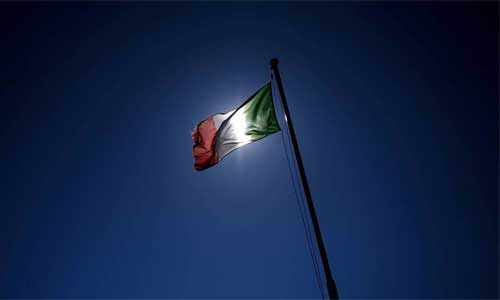Italy faces a double economic crisis in which two recessions and a banking crisis over the past decade have come on top of a slow structural decline in growth over a far longer period. And the country’s high level of public debt leaves policymakers with limited options.
The public debt is now an astronomical €2.3 trillion ($2.6 trillion), or 131% of GDP, requiring the authorities to issue more than €400 billion per year of government bonds. This makes Italy’s economy extremely vulnerable to external shocks, and means careful public-finance management is crucial for maintaining market confidence. Investor sentiment can change suddenly – as in the fall of 2011, when the spread between the yields on Italian bonds and German Bunds reached a peak of 575 basis points. Sucked into the vortex of a serious financial crisis, Italy could not avoid a severe recession.
Here, the fundamental issue of reputation comes into play. As with people, a country’s credibility can be destroyed in a few weeks and may take years to recover. And the markets are ready to present Italy with the bill, as we saw in the summer of 2018 when the new coalition government of the Five Star Movement (M5S) and the League party announced its spending plans.
Given the constraints imposed by the public debt, Italy must continue to consolidate its public finances. At the same time, policymakers need to lay the foundations for the road back from low growth and declining productivity. After all, Italy’s economy was growing by one percentage point per year less than the eurozone average well before the 2008 global financial crisis.
Italy must urgently regain competitiveness, boost productivity, and reduce taxes without worsening its budget balance. This will require structural reforms to reduce bottlenecks in the economy – for example, by opening up entire sectors that remain substantially monopolistic – and fundamentally reorganizing the public administration. The country needs targeted investments in innovation, training, and research, and tangible and intangible infrastructure. And it needs direct interventions to support the most vulnerable sections of the population and make growth more inclusive.
These are huge tasks at a crucial juncture for Italy. The biggest challenge is to find the necessary political consensus for such a strategy, given that reforms – especially the most painful ones – generate costs long before they yield benefits. Moreover, it is difficult to combine budgetary discipline with measures aimed at quickly increasing disposable income, strengthening social protection, and helping the many citizens who, owing to an economic crisis that caused Italy’s GDP to contract by 9%, are facing severe distress.
In a recent book, I argue that Italy’s Democratic Party, and center-left forces more broadly, lost the 2018 election because, after leading the country out of recession and dealing with a very difficult banking crisis, they failed to respond quickly and clearly to long-mounting popular discontent. The election was held amid growing disaffection with politics, at a time when the public mood – and not only in Italy – was decidedly favorable to forces calling themselves populist and seeking to defend national sovereignty.
Given such pressures, Italy’s ruling coalition may be tempted to ignore the EU’s fiscal rules, finance new current expenditure, and cut taxes without regard to the budget deficit. In reality, however, the path to recovery will be narrow for any Italian government. There are no shortcuts to reducing the country’s huge debt, despite insistent calls from some commentators for extraordinary measures. But policymakers can, and must, support stable and inclusive growth while keeping the public finances under control.
Italy’s economic debate also has a European dimension, which has become all the more important following the recent European Parliament election. Two points merit emphasis: first, the parliament continues to have a pro-European majority, and Italy, with a government fixated on national sovereignty, finds itself increasingly isolated.
The government’s hopes of forcing the EU to relax its fiscal rules will soon run up against these facts. Moreover, the government mistakenly believes that its nationalist counterparts elsewhere in the EU will show greater leniency toward Italy on budgetary matters.
But that’s not all. The Italian government’s growing isolation in Europe leaves the country on the sidelines of decision-making processes concerning key issues of European governance and reform of the eurozone. Here, too, Italy could follow a narrow path to rebuild reputation and trust, yet it risks veering off course and losing the ability to defend its interests effectively in Europe.
Italy already faces a difficult road to economic recovery, and to generating sustainable, job-creating, and inclusive growth. We should not make it even harder for ourselves.
Home » Opinion » Italy’s Narrow Path to Recovery
Italy’s Narrow Path to Recovery
| Pier Carlo Padoan

